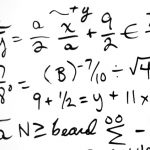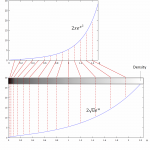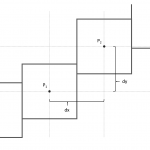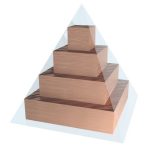I’ve already explained in a demonstrative way how the formula for sum squared numbers arises. Not only will I only show in this article how to calculate simple series like 1+2+3+4+…., but you will also see how we enhance our findings to tackle more complicated series like 1³+2³+3³+…. These formulas are applied in many different contexts.
Simple Sum: 1+2+3+4+…
The most simple series (or in mathematical terms: partial sum) we could calculate is the sum of the first integers. Therefore we define three series:
You may wonder why is needed, but often in mathematics you need to generate information from almost nothing and this is what we do here 😉 See where this approach takes us.
Now we come to the point where the magic happens 😀 The right-hand sum with upper limit can be modified. Therefore let’s add 1 to the upper limit. To make the value of the sum stay constant, we change the term in the sum from
to
. The lower limit stays at it is, because the value for
is zero and, in that, doesn’t affect the sum’s value.
It is almost obvious how to proceed. The equation can be rearranged to make the demanded series the subject. Mission complete!
Sum of Squares: 1²+2²+3²+4²+…
It is very important that you followed the ideas of the previous section, because – believe it or not – the shown pattern can be extended to tackle the summation of squared numbers! In addition to the series, which I already covered in the previous section, let’s define .
Again we apply the magic trick involving subtraction of the highest series.
After shifting the limits like shown in the previous section, we can simplify.
But what’s this? We know on the left-hand side as well as
and
on the right-hand side! We just have to make
the subject of the formula.
Sum of Cubes: 1³+2³+3³+4³+…
As expected, we will introduce a new series. We are looking for the sum of cube numbers, so the new series comprise numbers raised to the fourth power. I will skip the definition of and directly show the approach:
Making the subject leads us to the solution.
Just simplify this and receive a handy formula which allows you to add cube numbers together 😉
Sum of Higher Powers
You can extend the pattern to find formulas for sums of even higher powers. Just bear in mind that you have to introduce a series (partial sum) whose summands are raised to the power you are searching for + 1. Next, set up the difference between the elements with number and
, then simplify. 😉

 (17 votes, average: 4.65 out of 5)
(17 votes, average: 4.65 out of 5)






August 4, 2017 at 11:20 am
Isn’t the equation wrong which follows this line : “Just simplify this and receive a handy formula which allows you to add cube numbers together” ?
The equation should show cubes: 1-cubed plus 2-cubed plus…
December 18, 2017 at 3:55 pm
Thanks for the hint! You are perfectly right. I fixed the line 😉
December 29, 2024 at 3:26 pm
Wow! Thank you. I was always embarrassed to use the formula for squares without the understanding of how to get it in at least one way.